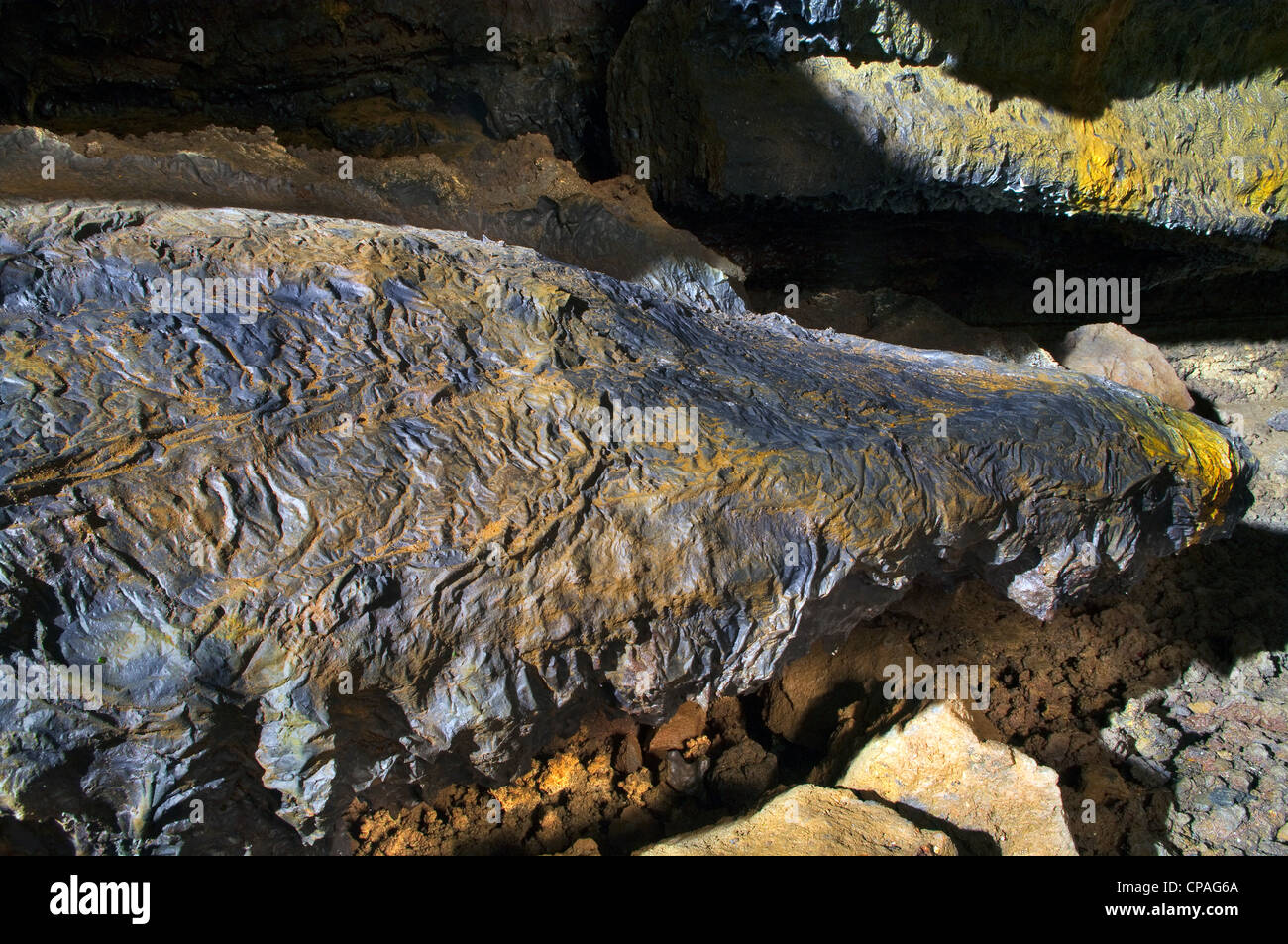Volcanic cave lava tube formation, Gruta do Carvão / Carvão Cave in Azores

Image details
Contributor:
Nuno Fonseca / Alamy Stock PhotoImage ID:
CPAG6AFile size:
49.8 MB (3.6 MB Compressed download)Releases:
Model - no | Property - noDo I need a release?Dimensions:
5120 x 3402 px | 43.3 x 28.8 cm | 17.1 x 11.3 inches | 300dpiDate taken:
18 September 2011More information:
Volcanic cave lava tube formation, Gruta do Carvão / Carvão Cave in Azores The Azores archipelago displays a rich and diversified speleological heritage due to its volcanic nature and the presence of basaltic lava flows. Gruta do Carvão cave system is the largest known in São Miguel island and one of the most remarkable of the entire archipelago with about 2, 5 km of total length since coastline of Ponta Delagada up to Arrifes parish. Due to its location, size, variety of geological structures and volcanic phenomena associated with, Gruta do Carvão was classified as Regional Natural Monument by the Regional Decree Nº4/2005/A of May 11th. Lava tubes genesis can be simply explained the following way: a lava flow moves down the slope, the cooling of its superficial and lateral zones (in contact with the air and surrounding rock formations) occurs and a crust is formed, nevertheless, underneath it hot lava continues to flow. After that, due to a decrease in the volcano´s emission rate the lava level inside the tube lowers gradually, forming, thus, a cavity under the already solidified superficial crust. When the volcanic eruption ends a lava tube is formed and later some ceiling collapses tend to occur originating skylights. Over time there is also the colonization by plants on the lava fields particularly near the cave entrances.